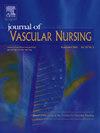“这使我的生活成为一种常规和养生法”——参与者参加社区步行和家庭循环训练项目的经历,以治疗间歇性跛行。
IF 1.1
Q3 NURSING
引用次数: 0
摘要
WALKSTRONG试验包括为间歇性跛行(IC)患者开发的社区步行和家庭循环训练计划。本研究的目的是通过收集参与者的意见和经验,确定他们对该方案的接受程度。方法:所有符合WALKSTRONG试验条件的参与者进行了半结构化访谈,从三组中选择:a)计划完成者,B)计划退出者和C)计划退出者。面试官感兴趣的是参与者对课程结构、参与意愿以及参与者的经历的看法。采访录音,逐字抄录,并进行专题分析。结果:干预组的14名参与者中有5名和20名计划退步者中的4名同意接受采访。退出锻炼计划的那个人不同意接受采访。采访中出现的三个主题是:1)2)“总体积极体验”;“指导和疼痛管理的重要性”;3)“障碍既类似于有监督的锻炼,也独特于家庭项目。”方案完成者对该方案反响良好,其中有些方面比其他方面更受欢迎。一些参与者报告了身体活动行为和IC症状的改善,并将该方案推荐给其他人。结论:以家庭为基础的电路方案得到了进一步改进的建议。随着可行性研究结果,有必要对该干预措施进行完全有力的随机对照试验。试验注册:NCT05059899。本文章由计算机程序翻译,如有差异,请以英文原文为准。
“It's put a routine and regimen in my life” – Participant experiences with a programme of community walking and home-based circuit training for intermittent claudication
Introduction
The WALKSTRONG trial includes a programme of community walking and home-based circuit training which has been developed for people with intermittent claudication (IC). The aim of the present study was to determine the acceptability of the programme for those who took part, by gleaning their opinions and experiences.
Methods
All participants eligible for the WALKSTRONG trial were approached regarding completing a semi-structured interview, selected from three groups: A) programme completers, B) programme withdrawers and C) programme decliners. Interviewers were interested in participants’ views on the programme structure, willingness to participate, and the experiences of those who did take part. Interviews were audio recorded, transcribed verbatim and thematic analysis was undertaken.
Results
Five of the 14 participants in the intervention group and four of the 20 programme decliners agreed to an interview. The one who withdrew from the exercise programme did not consent to be interviewed. The three themes that emerged from the interviews were: 1) ‘overall positive experiences with the programme, 2) ‘importance of guidance and pain management’, and 3) ‘barriers are both similar to supervised exercise and unique to home-based programmes’. The programme was well received by programme completers, with some aspects preferred over others. Some participants reported improvements in both physical activity behaviour and IC symptoms, and would recommend the programme to others.
Conclusion
The home-based circuit programme received several recommendations for further improvement. Along with the feasibility findings, a fully powered, randomised controlled trial of this intervention is warranted.
Trial registration
NCT05059899.
求助全文
通过发布文献求助,成功后即可免费获取论文全文。
去求助
来源期刊

Journal of Vascular Nursing
NURSING-
CiteScore
1.40
自引率
0.00%
发文量
33
期刊介绍:
Journal of Vascular Nursing provides clinical information regarding aortic and peripheral aneurysms, upper and lower extremity arterial disease, acute and chronic venous disease, and more. Original, peer-reviewed articles present descriptions, etiologies, diagnostic procedures, medical and surgical treatment and nursing implications of vascular system disorders.
 求助内容:
求助内容: 应助结果提醒方式:
应助结果提醒方式:


